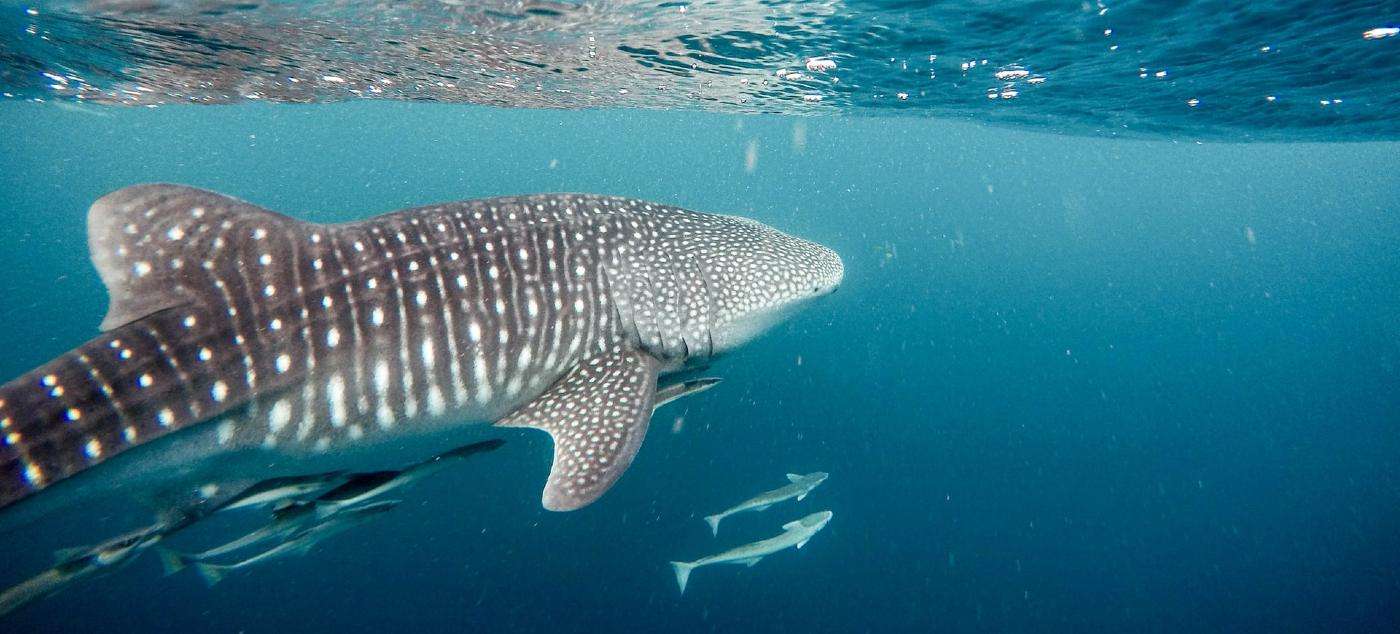This Lizard Has His Own Cookbook - and it's Utterly Adorable
Lenny the Lizard is an Instagram star from Washington state who now has his own cookbook, featuring tiny chef hats and chicken pot pies.

High above our planet, the Hubble Space Telescope has special software for parsing out the details of each individual star it surveys. Now this technology is being turned back towards Earth to help an animal that, while not as big as a star, is still quite a hefty unit.
Despite being the largest fish in the ocean, whale sharks are one of the least understood of their kind. Marine biologists don't have good data on their migration patterns, their global hotspots, breeding sites, or if they follow a seasonal food source.
It is principally this lack of knowledge that has prevented scientists from being able to develop conservation strategies to protect the animal from sliding further and further towards extinction.
Now a new citizen science project utilizes the Hubble's "Groth" algorithm—normally used for identifying individual stars in the universe—to map photographed-whale sharks' spotted patterns, of which no two are alike, and therefore effectively act like a fingerprint.
The algorithm forms the brain of a new photographic database of whale sharks, the largest ever assembled, that marine biologist Brad Norman of Western Australia's Murdoch University used to create the Wildbook for Whale Sharks—a library of individually identified sharks that anyone, hobbyist scuba diver, amateur scientist, or professional biologist, can contribute to.
"At the start it was just me taking photos of whale sharks at Ningaloo, but we needed more than one lonely researcher to collect enough data over an extended period," Dr. Norman said in a statement. "And, because tourists were constantly swimming with whale sharks too, why not enlist their support?"
"I was fortunate to team up with two brilliant scientists, software guru Jason Holmberg and NASA astrophysicist Zaven Arzoumanian, to develop a user-friendly database where anyone, anywhere can upload their own images of whale sharks."
"We're talking about an animal considered to be rare, maybe a couple of hundred documented sightings in all of history," Jason Holmberg, who came up with the idea to turn the Hubble's Groth algorithm on the sharks, and who teamed up with Dr. Norman to create the database, told NASA.
Now the library contains more than 76,000 sightings of 12,357 sharks, each one capable of growing up to 40 feet long and weighing 20 tons. These gentle, filter-feeding giants are somewhere between Endangered and Critically Endangered on the IUCN Red List, and the database will go a long way towards ensuring that their feeding grounds and migration and breeding habitat can be found and preserved.
The spots just behind the whale shark's fins are unique to each fish, so Norman and company can see where each one travels, breeds, and likes to stay. This is actually typical of biology. Animals like cheetahs and leopards have totally unique coats of spots, and polar bears can be identified even through just the arrangement of their whiskers.
As space and the ocean remain the final frontiers for scientific exploration, it seems only fitting that such a legendary space explorer as the Hubble Telescope should be used to help plumb the depths of the sea, especially when it's looking for an animal which in the Malagasy language is known as marokintana, which means "many stars."
HELP Your Friends Space Out to the Good News By Sharing it Online…
Be the first to comment